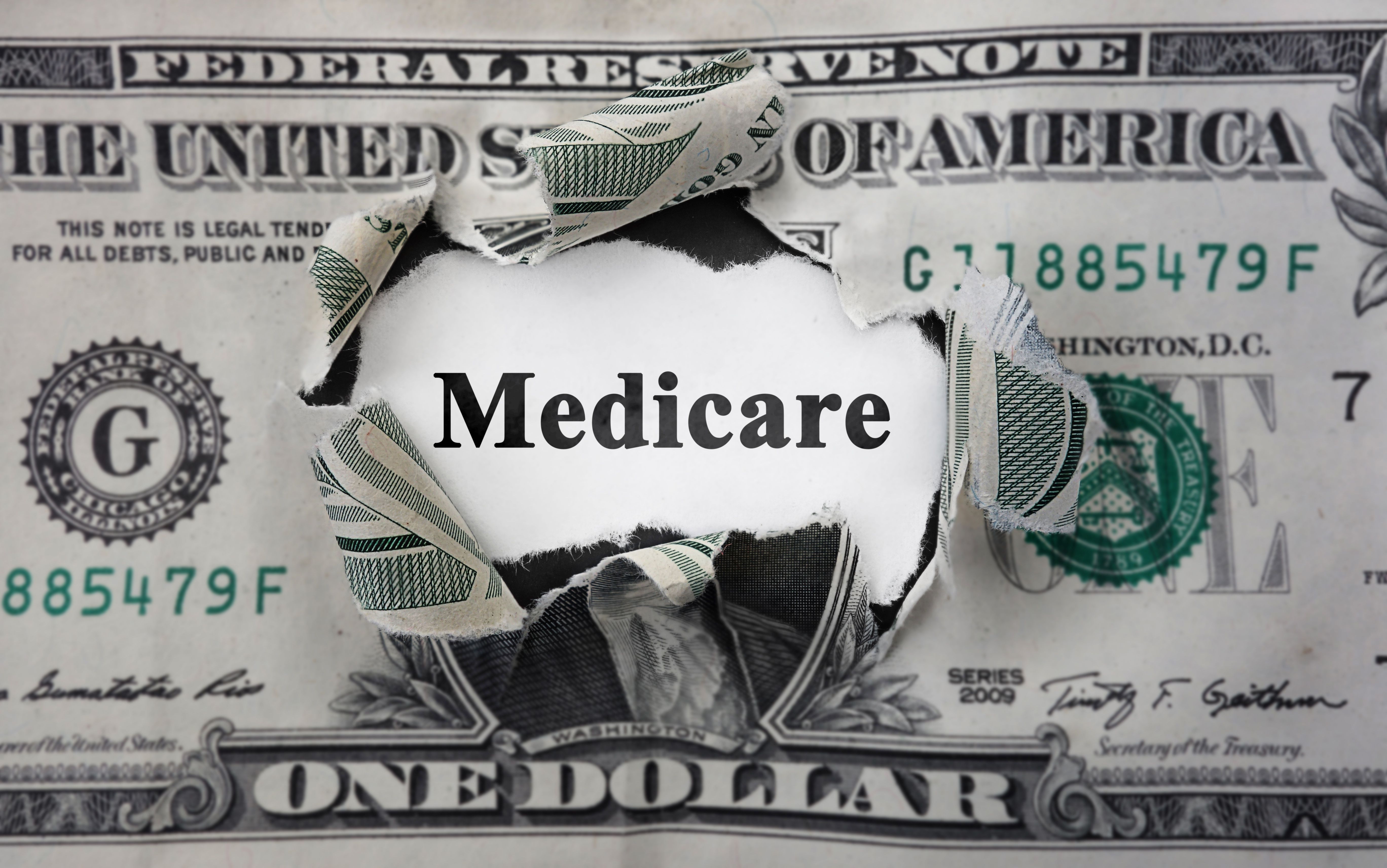Commentary
Article
Why a Medicare pay cut to physicians should matter to everyone
With burnout, worker shortages and razor-thin margins, primary care doctors are in trouble in the United States, and Medicare is not helping.
© zimmytws - stock.adobe.com

There’s a general belief out there among the public that all doctors are rich. So when the Centers for Medicare & Medicaid Services, blessed by the U.S. House of Representatives, proposed a 2.8% Medicare pay cut, people may have little sympathy that doctors will go home with a little less in their pockets. But for primary care doctors whose main patient base is made up of Medicare recipients, this cut can have the effect of forcing them out of medicine altogether and leave thousands of senior citizens without access to basic health care.
This is the fifth year Medicare reductions have hit physicians, and they can no longer hold back the tidal wave. In California, doctors are being forced to retire early. In Texas, they are having to let go of staff and can’t recruit new doctors. In New York, small physician practices are selling to private equity. Across this country, we are seeing doctors step away, start cash-pay practices and say goodbye to treating Medicare patients. Why?
They literally can’t afford to continue doing so.
Amanda Hill, JD

Today’s health care system is facing a doctor shortage, while at the same time the senior population is growing. According to the Administration for Community Living, the number of seniors in the U.S. is expected to increase to more than 80 million — more than double the number from 2000. And yet practices are asked to see this growing number of aging Americans for less money. Doctors who practice in this space face government audits that fine them hundreds of thousands of dollars for committing Medicare “fraud,” sometimes just for checking the wrong boxes or failing to note something on a patient’s chart. Doctors are burnt out, suicide risk among physicians is increasing, and they are leaving medicine entirely for less stressful and more lucrative careers, like executive coaching, reviewing charts for insurance companies or working part-time jobs with a private equity-backed clinic that is designed to make money.
This is why another Medicare cut isn’t just a doctor’s problem: It’s an American problem. Too many primary care doctors simply won’t be able to afford to take care of our elders. It’s already happening. Look around and try to find a doctor in many of the smaller states. At a very minimum, it’s a monthlong wait. For many states without tort reform, it’s a six- to nine-month wait, and too often, patients end up in the emergency room out of sheer exhaustion. This is compounded by the shortage of health care workers, which remains a huge problem after the COVID-19 pandemic.
Year over year, a combination of reductions in fees and reimbursements, micromanaging regulators and increased red tape strip doctors of their autonomy. Physicians in the areas of family practice, internal medicine and specialties that don’t generate a lot of procedural revenue are barely making it. Fewer small groups are able to make it on their own without a large financial backer, and they are burned out. In rural areas, it’s even harder. Unless you become a Federally Qualified Health Center, or a nonprofit to get grant funding, you are left to the woeful reimbursement of commercial plans and Medicare as your primary source of income. There has been a 33% overall decrease in Medicare payments from 2001 until today when adjusted for inflation, and that’s just not enough to recruit and retain good doctors.
There’s a lot of behind-the-scenes red tape that patients don’t see in any medical practice. Doctors use current procedural terminology (CPT) codes to submit a claim to the government. Doctors have to be trained in what type of documentation is required and what CPT code to use. The doctor then documents in the chart, chooses the coding that works, submits the claim and waits for the government (or insurance company) to pay it. It’s a complex process of documentation and recordkeeping just to file a claim, then to have to wait a month to get their money (longer for commercial insurance, and often then it’s met with denials). A standard visit may only yield $90.88.
This is when it gets tricky. Medicare auditors are often incentivized to find errors in documentation. If they find an issue, there can be enormous fines and penalties, and that percentage of “errors” is extrapolated, and damages are established under the False Claims Act, which are significant. The government makes a lot of money this way, so they aren’t stopping.
This alone can bankrupt a doctor. They are not criminals. But here they are, trying to develop perfect protocols, having lawyers on speed dial, frantically trying to figure out how to pay the fines, losing sleep, establishing compliance plans and making sure they check all the right boxes or face huge financial risk. The phone calls, portal messages and nursing efforts aren’t even included in that payment. And now they get paid even less for the same work. The infrastructure alone to handle all of this is enough to bury a doctor in daily practice. Even if they outsource a lot of it, the buck stops with them.
Why should we all care about a Medicare physician pay cut? Because the razor-thin margins doctors are operating under now will be even worse. As a health care attorney, I had to develop training courses in billing and coding to explain to my clients what could trip them up, how to prepare for an audit and what common errors may occur. Everyone is on edge. Clients have cried to me on the phone after getting audit results that would shut down their entire practice. One client said he’d have to sell his house, take out a business loan and pay off the remaining amount over three years. You can see why many doctors are selling out to private equity, throwing in the towel or opting out of Medicare entirely.
We cannot afford to lose any more good doctors and have a system of health care in this country that’s run on a churn-and-burn mentality. We need primary care doctors to continue to see our mothers, our sons, our sick nephews. We need health care to remain robust and not die on the vine. We need our doctors to be paid a decent wage so they can spend time with patients. Physicians have lives too.
Doctors don’t want to stop seeing Medicare patients. But additional cuts are breaking them. They look to commercial plans with better reimbursement rates. They want to start cash-pay practices where they don’t have to look over their shoulders at government auditors. They want to breathe again. They are exhausted from working so hard and being punished as a result. More cuts mean a lower salary for all doctors, driving them out of small towns and into places that have more financial backing and can pay a living wage. They also have rising house prices, student debt and college tuition. They have to go where the money is.
There won’t be such a thing as a hometown doctor for Medicare recipients. Primary care will be nothing short of a ghost town.
Why should we care? Because we need doctors to be able to hang a shingle again. We need doctors to not be dependent on private equity-based companies who force doctors to get through 40-plus patients a day to get a paycheck. We need doctors to have the luxury to sit down and listen. This cut is more salt in an ever-growing infected wound.
Enough is enough. If this trend continues, we will push doctors into cash-pay models where only the wealthy get access to care. Health care should be a right of all Americans, not something reserved for those who have contacts, money or privilege. Americans deserve better.
Amanda Hill, JD, is the owner and founder of Hill Health Law Group, where she brings nearly 25 years of health care law expertise to her clients. Before establishing her law group, she worked for the U.S. government in defending large hospitals before becoming general counsel for a large multispecialty group and a Federally Qualified Health Center in Austin, Texas. She is the author of the Fraud and Abuse Manual and “Build Your Compliance Plan” for the Texas Medical Association. In 2020, Amanda launched Guard My Practice, a video platform that expands her guidance to physicians across the U.S. looking for expert legal insight into topics including contract negotiations, physician burnout, and how to have deeper relationships with patients and staff.





